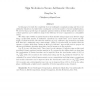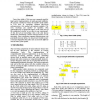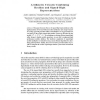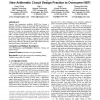373 search results - page 8 / 75 » Learning Arithmetic Circuits |
IACR
2011
12 years 8 months ago
2011
In this paper, we study the complexity of secure multiparty computation using only the secure arithmetic black-box of a finite field, counting the cost by the number of secure m...
DATE
1999
IEEE
14 years 27 days ago
1999
IEEE
If real number calculations are implemented as circuits, only a limited preciseness can be obtained. Hence, formal verification can not be used to prove the equivalence between th...
DATE
2006
IEEE
14 years 2 months ago
2006
IEEE
Carry Save Adder (CSA) trees are commonly used for high speed implementation of multi-operand additions. We present a method to reduce the number of the adders in CSA trees by ext...
APCSAC
2003
IEEE
14 years 1 months ago
2003
IEEE
This paper discusses the use of signed-digit representations in the implementation of fast and efficient residue-arithmetic units. Improvements to existing signed-digit modulo adde...
ISLPED
2007
ACM
13 years 10 months ago
2007
ACM
Negative bias temperature instability (NBTI) has become a dominant reliability concern for nanoscale PMOS transistors. In this paper, we propose variable-latency adder (VL-adder) ...




